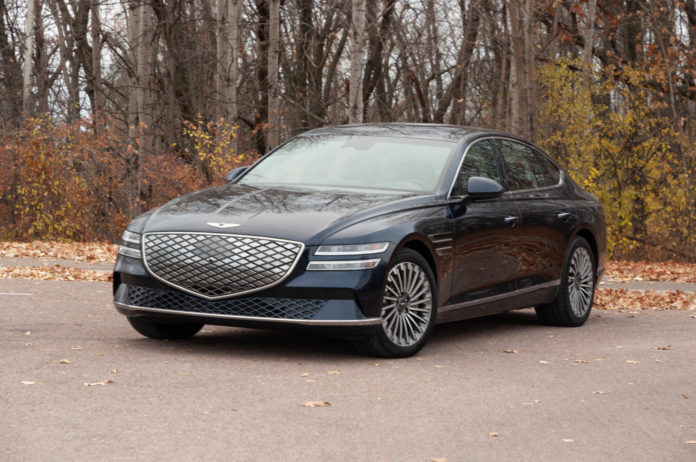The 2023 Genesis Electrified G80 isn’t so much a revolution of a gas-powered car as it is a shockingly good adaptation of a terrific vehicle already pushing its German rivals.
It made me spend the week pondering whether Mercedes-Benz made mistakes with the EQE.
With an EPA range rating of 282 miles, a gorgeous design, and a sense of normalcy for $80,920, the 2023 Genesis Electrified G80 should make consumers pause before heading to competitors’ showrooms. That is, if they live in the 12 states where it’s actually sold.
2023 Genesis Electrified G80
Cranking it to 800 volts
The Electrified G80 isn’t a clean-sheet EV like its E-GMP-based GV60 sibling. Genesis adapted the current G80 by removing the gas powertrain bits and sliding an electric powertrain in their place.
Mash the accelerator and the 365-hp dual-motor powertrain with 136-kw electric motors at each axle doesn’t launch you into the seat like a Tesla Model S or some other EVs, but it’s easily the quickest G80 money can buy. Instant torque, all 516 lb-ft of it, hits much harder than in any other G80, including the G80 Sport with its 375 hp and 391 lb-ft of torque. It wafts the EG80 off the line, and the car really picks up steam between 25 and 80 mph.
Aside from the smooth powertrain, the EG80 has no sporty pretense. The softest sprung G80 model, the electric version exhibits the most body roll, but it’s still well controlled. The steering is a smidge on the light side and provides just enough feedback to know what’s going on at the wheels, but this system isn’t as communicative as what you’ll find in the Cadillac CT5. Standard rear-wheel steering tightens the turning radius and shrinks the mid-size luxury sedan around corners just like the G80 Sport. Unlike its gas-powered sibling, the system in the electric model never felt uncoordinated or produced weird suspension undulations. That’s likely due to a retuned suspension that works well with the car’s increased mass. The EG80’s modest body roll ensures you’re keenly aware it’s heavier than any other G80 model, which is because it weighs just over 5,000 pounds. Gas-powered G80s weigh between just under 4,000 and nearly 4,500 pounds.
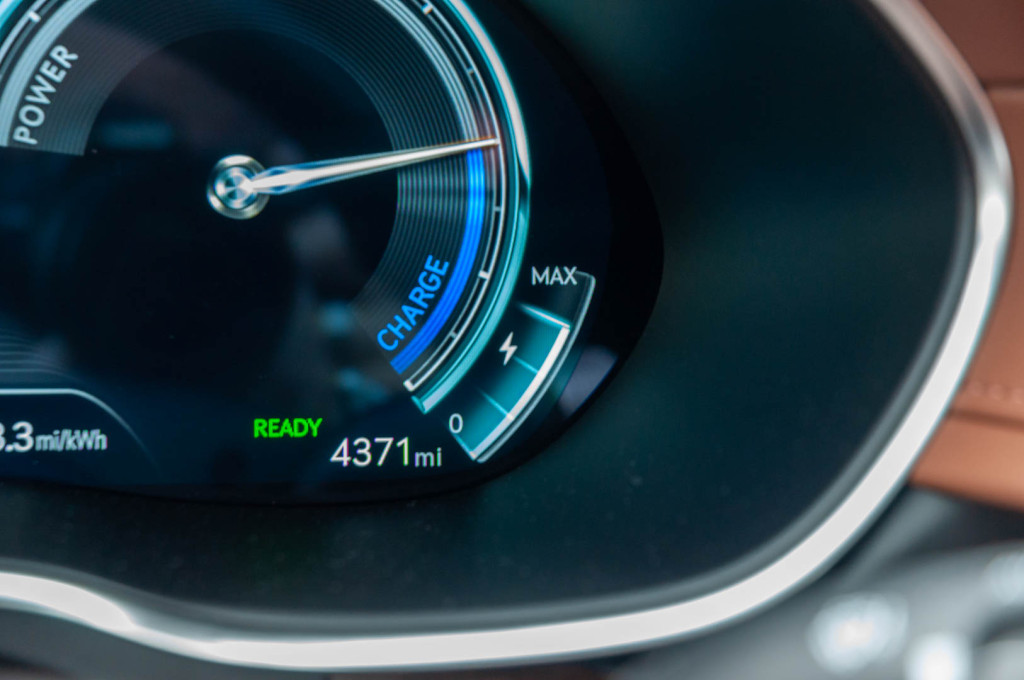
2023 Genesis Electrified G80
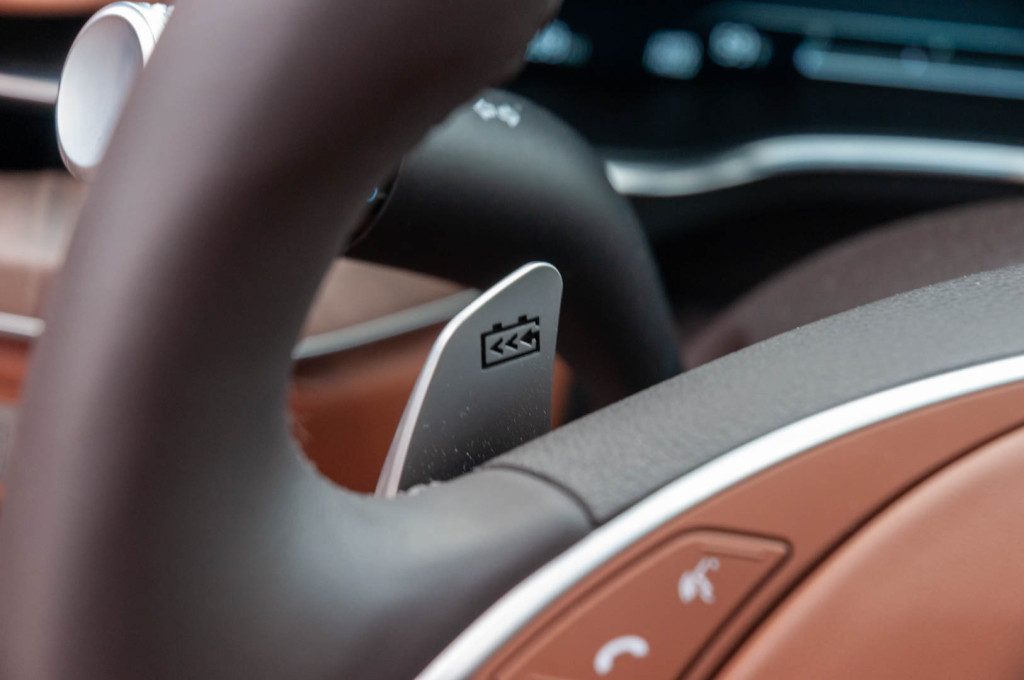
2023 Genesis Electrified G80
Genesis offers three levels of regenerative braking and a system the brand (along with Hyundai and Kia) dubs i-Pedal, which is essentially one-pedal driving with maximum regeneration. The levels of regenerative braking are controlled via the steering wheel paddles, and i-Pedal is activated by the right-side shift paddle. Annoyingly, the EG80 will remember the first three levels of regenerative braking upon restart but refuses to restart with i-Pedal enabled.
The 87.2-kwh lithium-ion battery pack is a smidge smaller than the 90.6-kwh pack in the Mercedes-Benz EQE. Genesis went through the trouble to upgrade the EG80’s electrical system to 800 volts, which Mercedes-Benz did not do with the clean-sheet EQE, opting instead for a 400-volt system. This enables the Electrified G80 to recharge the battery from 10% to 80% in just 22 minutes on a DC fast charger, according to Genesis, and helps futureproof the EG80.
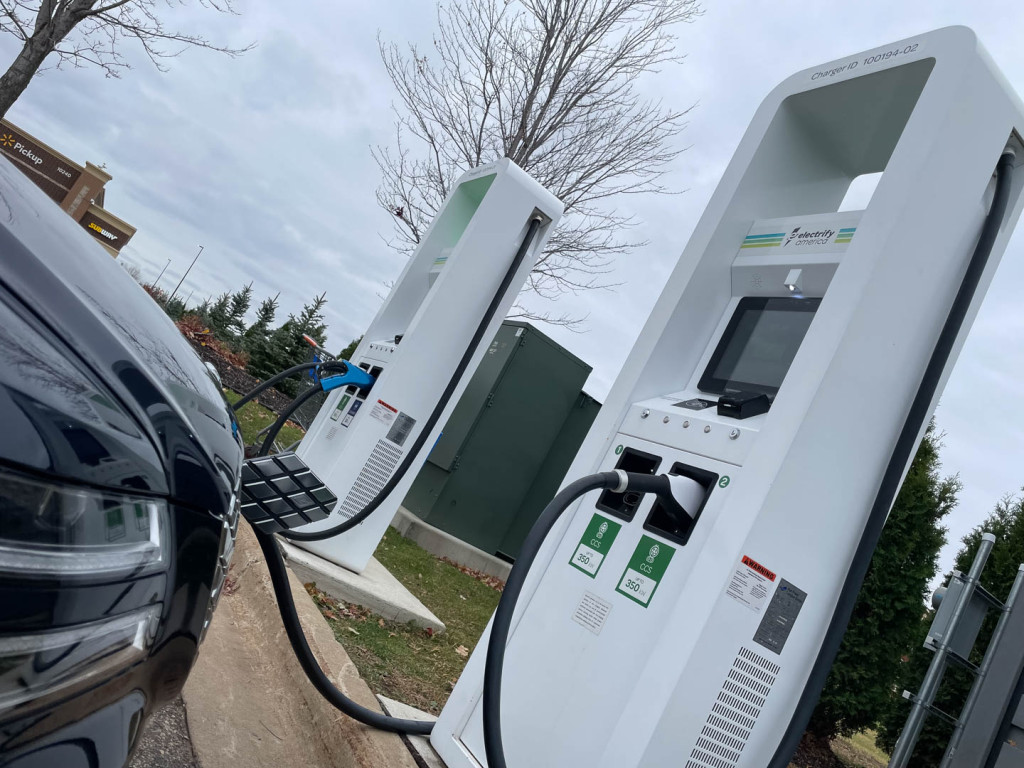
2023 Genesis Electrified G80
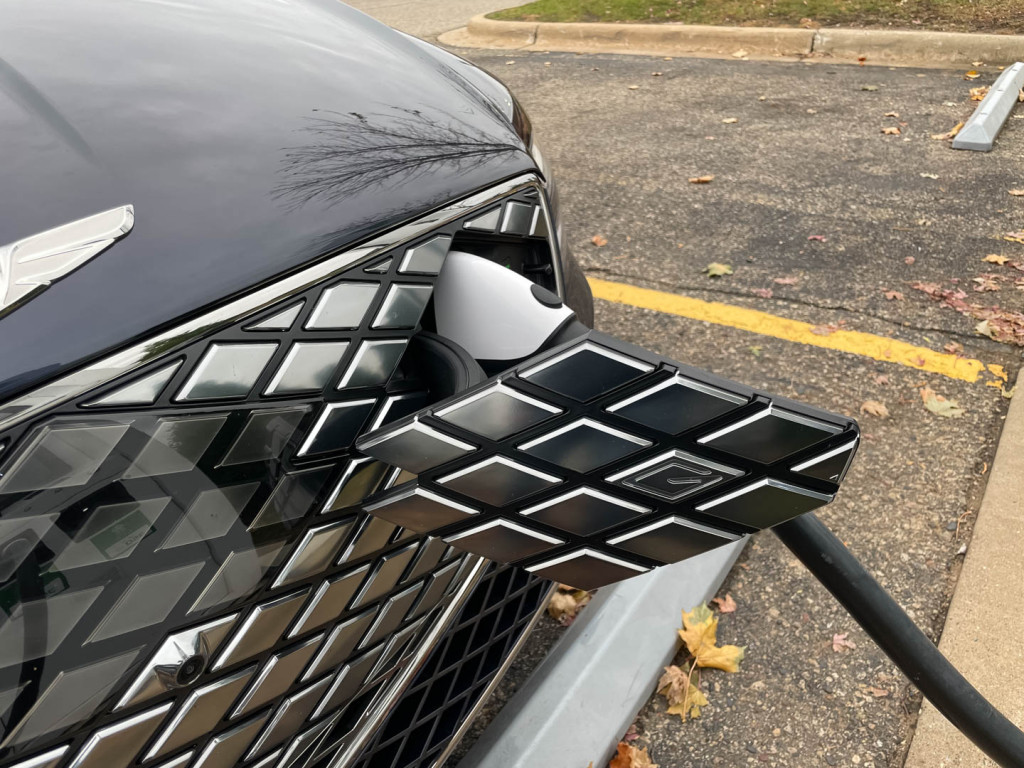
2023 Genesis Electrified G80
I came close to seeing that charging performance in the real world. Hooked to a 350-kw charger, the EG80’s battery took about 23 minutes to charge from 30% to 80% with a peak charging rate of 145 kw when the battery had a 68% charge. On a 48-amp, 240-volt charger, Genesis says the EG80 will take about 7.5 hours to charge from 10% to 100%. A 110-volt charger is going to take a painful 80 hours, so just think of that as a trickle charge.
Despite ambient temperatures in the 30s during most of my time with the EG80, I still saw a respectable average of 3.1 mi/kwh over the course of 367 miles. That average was higher at 3.3 mi/kwh during the first 185 miles of driving until more cold and highway speeds were baked into the mix. It seems the EPA’s 282 miles of range is realistic. That’s probably about the same range rating a comparable dual-motor EQE will achieve when it’s rated.
The Electrified G80 is also capable of bi-directional charging, which is sometimes referred to as vehicle-to-grid or vehicle-to-load function. It means the EG80 can discharge its electricity at a rate of up to 3.6 kw to charge another EV, power an appliance, or even power a home. I didn’t test this function. Next time, Genesis.
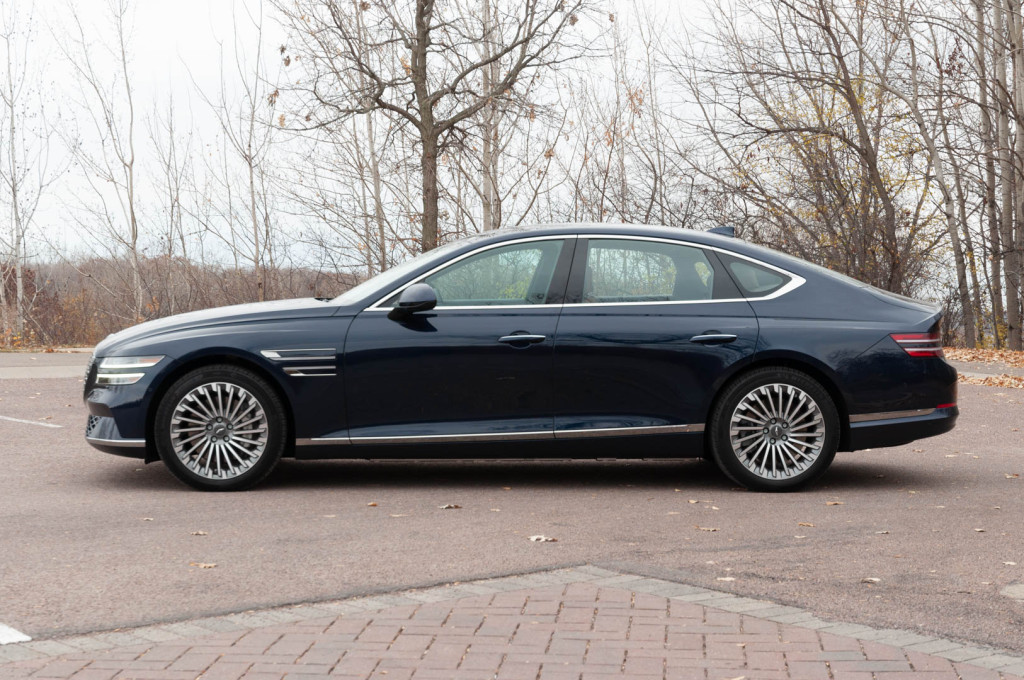
2023 Genesis Electrified G80
Looks like a G80
Most people won’t be able to tell the Electrified G80 lacks a gas engine under its hood. Nearly every bit of its design is the same as its dino-drinking brethren, and that’s not a bad thing.
Unlike the futuristic-looking Mercedes-Benz EQE, the Electrified G80 checks in with classic rear-wheel-drive proportions featuring a long hood, a long dash-to-axle ratio, and a properly short rear end. It inherits those proportions from the gas model, so Genesis couldn’t employ a cab-forward design in the name of aerodynamics like Mercedes has.
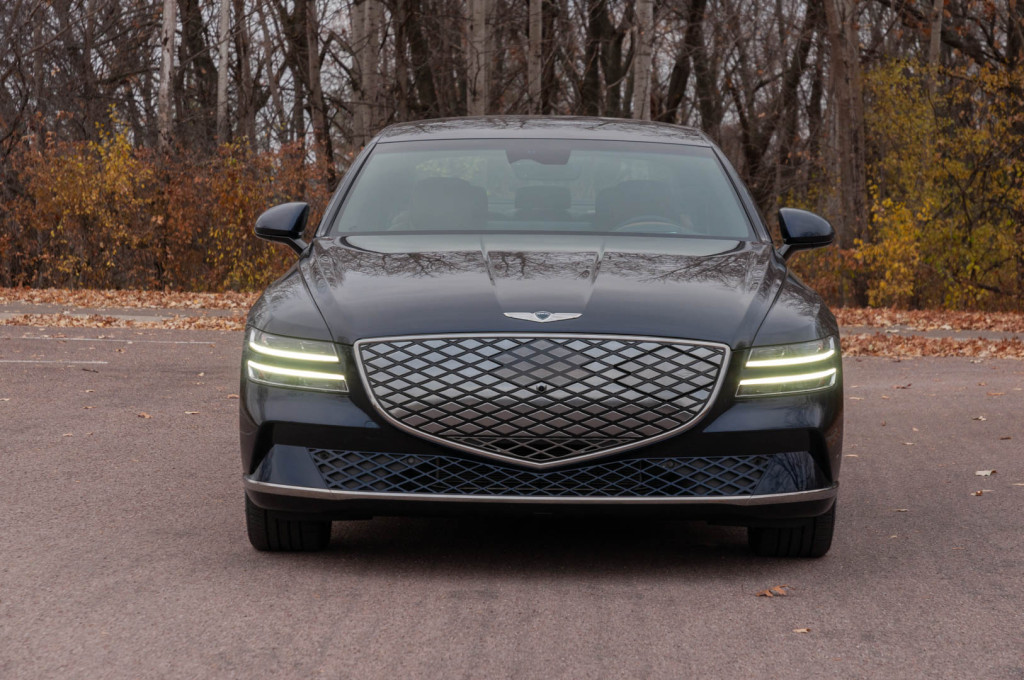
2023 Genesis Electrified G80
Visual changes that differentiate the electric G80 are limited. The key giveaway is a closed-off diamond-pattern grille with a hidden charge port on the driver side under a diamond-shaped door, but model-specific 19-inch wheels and available Matira Blue exterior paint also distinguish the electric model from less efficient G80s. Oh, and there are no tailpipes.
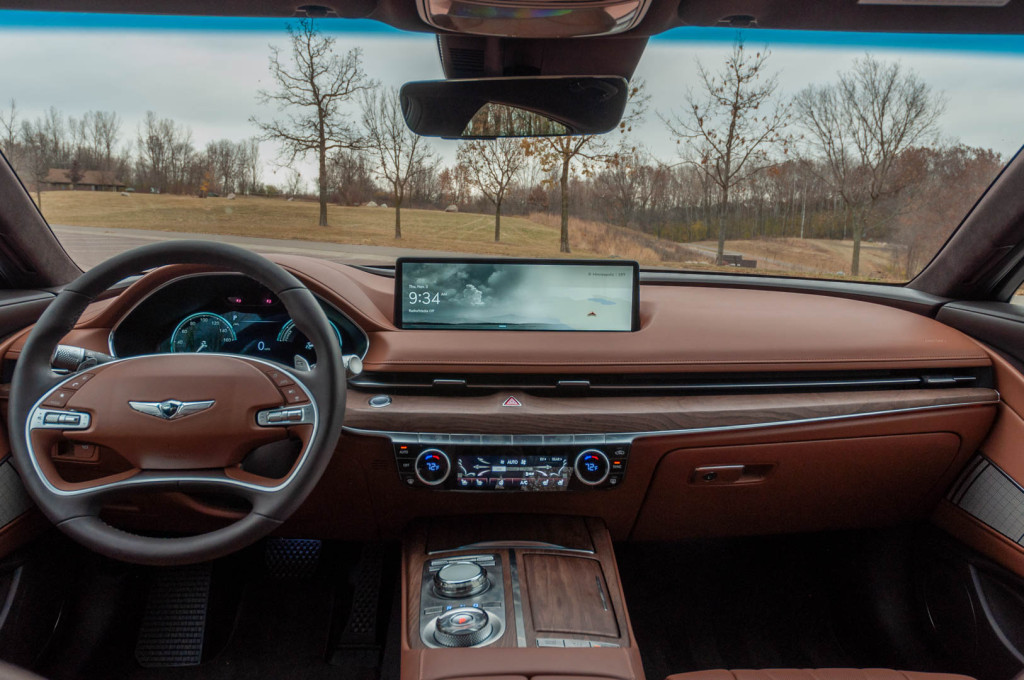
2023 Genesis Electrified G80
Inside, the Electrified G80 looks like any other G80, except it’s so loaded to the gills that it offers no options. A 12.3-inch 3D digital gauge cluster swaps out the fuel gauge for a regenerative braking mode meter, the tachometer becomes a power meter, and instead of a range indicator the display shows the juice left in the battery pack. The standard controls are all here, including the 14.5-inch touchscreen infotainment system with its easy-to-use tiled interface, the rotary controller for the infotainment system that augments the touchscreen, and the hard buttons for the audio system and climate controls. Remember buttons, Mercedes-Benz?
The conversion from a gas car rears its head when you slide into the cockpit. I immediately noticed the seating position felt high compared to a gas model. Genesis spokesperson Jarred Pellat confirmed that due to the battery pack the seats sit about an inch higher. This means the driver gets a better view of the road (which can also be accomplished by raising the seat in any vehicle), but that there’s about an inch less headroom than in a standard G80 all around. Compromises.

2023 Genesis Electrified G80
While the trunk retains the ski passthrough, it’s down 3.0 cubic feet for a rather small 10.0 cubic feet of cargo hauling space. I was still able to fit four sets of downhill skis (two adult and two child sets) and four sets of ski boots in the trunk with room to spare.
Unlike the EQE, which lacks a frunk due to engineering decisions, the EG80 lacks a frunk because its ICE platform is pitch hitting with an electric powertrain. The long hood opens to reveal a front motor, inverter, and necessary cooling hardware.
With similar range and efficiency, a prettier design, and more future-proofed hardware than a comparable Mercedes-Benz EQE, the 2023 Genesis Electrified G80 has some advantages over the EQE without fully committing to an EV architecture. It costs $8,000 more than a comparable gas model, but effectively trades gas for electrons. I look forward to the A-game, clean-sheet EV stuff from Genesis. Watch out, Germany.

